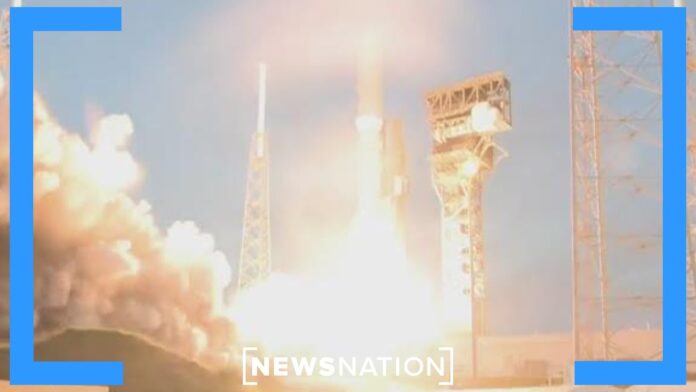United launch alliance’s Atlas V successfully launches its last national security mission, marking the end of an era for the iconic rocket
On the morning of July 30, 2024, United Launch Alliance (ULA) bid farewell to its storied Atlas V rocket with a significant milestone. At precisely 6:45 a.m. EDT (1045 GMT), the Atlas V lifted off from Florida’s Canaveral Space Force Station, carrying out its final national security mission, designated USSF-51.
The USSF-51 mission holds special significance as it marks the last time the Atlas V will be used for national security purposes. The rocket, a staple of ULA’s launch portfolio, has been a cornerstone of the U.S. Space Force’s efforts since it first flew in 2002. This launch also represented the 100th national security mission for ULA, underscoring the Atlas V’s pivotal role in safeguarding U.S. interests in space.
The Atlas V rocket’s journey began in 2002 and has since seen 100 missions, including high-profile launches such as the recent deployment of Boeing’s Starliner capsule to the International Space Station with NASA astronauts. Its inaugural mission for national security came in 2007, and over the years, the rocket has conducted more than 50 similar flights.
Col. Jim Horne, senior materiel leader for Launch Execution Delta at the Space Force’s Space Systems Command (SSC), praised the Atlas V team’s performance, highlighting their impressive record. “The Space Force Atlas V team has an amazing record of serving our National Security Space lift needs,” Horne remarked. “This mission, our last launch with the Atlas V, is looking great!”
Walt Lauderdale, USSF-51 mission director, also commended the Atlas V for its reliability and service. “The Atlas V launch system has been the stalwart for national security launches over the past 20 years,” Lauderdale said. “This mission, together with all those preceding, demonstrates the Atlas V integrated government/industry team’s commitment to safely deliver critical assets to space.”
Although the Atlas V has completed its national security duties, it is not yet retired. The rocket still has 15 more missions scheduled, primarily involving launches for Boeing’s Starliner and satellites related to Amazon’s Project Kuiper broadband constellation.
Looking ahead, the Space Force plans to transition to ULA’s new Vulcan Centaur rocket for future national security missions. The Vulcan Centaur, which successfully launched Astrobotic’s Peregrine moon lander earlier this year, will continue to play a crucial role in U.S. space operations. Despite a recent setback with Peregrine’s mission, the Vulcan Centaur is expected to uphold the legacy of its predecessor.
The details of the USSF-51 payload remain classified, reflecting the sensitive nature of the mission. As the Atlas V concludes its distinguished service, the space community and national security apparatus look forward to new advancements and continued exploration of space.
Analysis:
Political: The retirement of the Atlas V rocket from national security missions reflects ongoing changes in U.S. defense and space policies. The transition to new rockets like the Vulcan Centaur highlights a strategic shift in maintaining national security through modernized space capabilities. The political implications involve balancing technological advancements with national security requirements, influencing future defense budgets and space policy decisions.
Social: Socially, the end of the Atlas V’s national security missions represents a significant moment in space exploration history. The rocket’s legacy will be remembered for its role in advancing U.S. space capabilities and securing national interests. The transition to new technology can spark public interest and discussion about the future of space exploration and its impact on society.
Racial: The racial impact of the Atlas V’s retirement is minimal. However, the shift to new technology in space exploration could influence discussions about diversity and inclusion in STEM fields. The increased visibility of space programs might encourage broader participation and representation in aerospace careers.
Gender: The end of the Atlas V’s service might also influence gender dynamics in the space industry. As new technologies and missions emerge, there is an opportunity to promote greater gender diversity in aerospace fields. The retirement of a key rocket and the introduction of its successor could be a catalyst for increased female participation and leadership in space exploration.
Economic: Economically, the Atlas V’s retirement and the shift to the Vulcan Centaur could impact the space launch industry. The transition involves significant investment in new technologies and infrastructure, affecting contracts, budgets, and market dynamics. The continued use of the Atlas V for commercial missions will sustain its economic value, while the Vulcan Centaur’s deployment could drive innovation and competition in the space launch sector.
